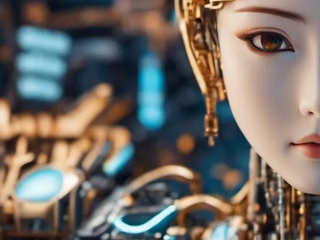It was the most advanced consumer product of the century. The industry started with its innovators located in different cities over a wide region. But within 20 years it would be concentrated in a single entrepreneurial startup cluster. At first it was a craft business, then it was driven by relentless technology innovation and then a price war as economies of scale drove efficiencies in production. When the market was finally saturated the industry reinvented itself again – one company discovered how to turn commodity products into “needs.”
They opened retail outlets across the country and figured out how to convince consumers to flock to buy the newest “gotta have it” version and abandon the perfectly functional last year’s model.
No, it’s not Apple and the iPhone.
It was General Motors and the auto industry.
In the Beginning
At the beginning of the 20th century the auto industry was still a small hand-crafted manufacturing business. Cars were assembled from outsourced components by crews of skilled mechanics and unskilled helpers. They were sold at high prices and profits through nonexclusive distributors for cash on delivery. But by 1901, Ransom Olds invented the basic concept of the assembly line and in the next decade was quickly followed by other innovators who opened large scale manufacturing plants in Detroit – Henry Packard, Henry Leland’s Cadillac, and Henry Ford with the Model A.
The Detroit area quickly became the place to be if you were making cars, parts for cars, or were a skilled machinist. By 1913 Ford’s first conveyor belt-driven moving assembly line and standardized interchangeable parts forever cemented Detroit as the home of 20thcentury auto manufacturing.
Feature Wars
The automobile industry was founded and run by technologists: Henry Ford, James Packard, Charles Kettering, Henry Leland, the Dodge Brothers, Ransom Olds. The first twenty-five years of the century were a blur of technology innovation – moving assembly line, steel bodies, quick dry paint, electric starters, etc. These men built a product that solved a problem – private transportation first for the elite, and then (Ford’s inspiration) – transportation for the masses.
Market Saturation
Ford tried to escape the never-ending technology feature wars by becoming the low cost manufacturer. Fords River Rouge manufacturing complex – 93 buildings in a 1 by 1.5 mile manufacturing complex, with 100,000 workers – vertically integrated and optimized mass production.

By 1923, through a series of continuous process improvements, Ford had used the cost advantages of economies of scale to drive down the price of the Model T automobile to $290.
When the 1920’s began there were close to a 100 car manufacturers, but the relentless drive for low cost production forced most of them out of business as they lacked capital to scale. For a brief moment, half the cars in the world were now Fords. To make matters worse, the long service life of Ford and GM cars (8 years for Fords Model T, 6 years for everyone else) retarded sales of new cars. In 20 years, U.S. car ownership had risen from 0 to 80% of American families – the market was approaching saturation.
Now cars would have to be sold almost entirely to people who already owned a car.
The Crazy Entrepreneur
After success as a leading manufacturer of horse-drawn carriages, Billy Durant was one of the few who saw the writing on the wall and got into the car business. Although he wasn’t a technologist, he was an entrepreneur with a great eye for acquiring car companies run by technologists. His keen insight was that several carmakers combined under one company umbrella would have more growth potential than one brand on its own. Like most founders, he was great at searching for a business model but terrible at in large company execution. When his board fired him, Durant bought a competing company called Chevrolet, built it larger than his last company, and used Chevy stock to buy out his old company – General Motors – and threw out the board. Yet a few years later under his brilliant but reckless leadership GM was again on the brink of financial disaster and his new board fired him. (Durant would die penniless managing a bowling alley.)
Although he wasn’t a technologist, he was an entrepreneur with a great eye for acquiring car companies run by technologists. His keen insight was that several carmakers combined under one company umbrella would have more growth potential than one brand on its own. Like most founders, he was great at searching for a business model but terrible at in large company execution. When his board fired him, Durant bought a competing company called Chevrolet, built it larger than his last company, and used Chevy stock to buy out his old company – General Motors – and threw out the board. Yet a few years later under his brilliant but reckless leadership GM was again on the brink of financial disaster and his new board fired him. (Durant would die penniless managing a bowling alley.)
Durant’s ultimate replacement – an accountant named Alfred P. Sloan – would turn GM into the leading and most admired company in the U.S.
Relentless
Over the next decade Sloan would implement a series of innovations which would last for over half a century. And catapult General Motors from the number 2 car company (with a ¼ of Ford’s sales) into the market leader for the next 100 years. Here’s what he did:
Distributed Accounting Unlike Ford, GM was originally a collection of separate companies. Distributed Accounting turned those fiefdoms into product divisions each of which, could be focused like Ford’s mass-produced lines. But Sloan went further. He figured out how to centralize financial oversight of decentralized product lines. His CFO created standardized division sales reports and flexible accounting, and allocated resources and bonuses to the GM divisions by a uniform set of rules. It allowed GM to be ruthlessly efficient internally as well with its dealers and suppliers. It got the division general managers to fall in line with corporate goals but allowed them to run their divisions freely. GM became the prototype of the modern multidivisional company.
Car Financing. Realizing that Ford would only accept cash for car purchases, in 1919 GM formed GMAC to provide new car buyers a way to finance their purchases through debt.
Consumer Research. Every since his days at Hyatt Roller Bearing, Sloan, and by extension GM, was relentless about getting out of the building – they had an entire department that studied consumers, dealers, suppliers. More importantly, Sloan led by example. He visited dealers and suppliers, listened to customers and was tied tightly to his head of R&D Charles Kettering.
All this would have made General Motors a well-run and well-managed company. But what they did next would make them the dominant company in the U.S. and eventually put tail-fins on the iPhone.
Part 2 explains it all.

















